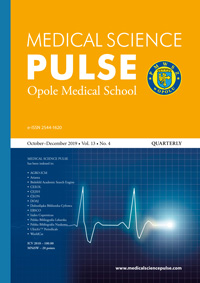Stopping hemorrhages from the limbs: raising efficiency through training on unfixed human preparations
Stopping hemorrhages from the limbs: raising efficiency through training on unfixed human preparations
Author(s): Piotr Leszczyński, Monika Klepacka, Paweł Bakalarski, Sylwia Załęska-Marniche, Katarzyna Krusińska, Izabela Bojko, Karolina SówkaSubject(s): Health and medicine and law
Published by: Państwowa Medyczna Wyższa Szkoła Zawodowa w Opolu
Keywords: cadavers; bleeding; hemorrhage; paramedic; learning; education
Summary/Abstract: Background: Hemorrhages from the limbs are one of the most frequent injuries endangering human life. Immediate help from witnesses and the emergency services is necessary in such cases. Developing the skill of stopping the bleeding manually requires adequate training. One of the modern methods for such training is the use of cadavers, which accurately imitate real patients. Aim of the study: The aim of this research is to evaluate the effectiveness of learning to stop the bleeding manually on freshly frozen cadavers. Material and methods: Thirty-one people who had already trained on medical phantoms took part in the study. The participants stopped the hemorrhage on the cadavers twice and the time taken was recorded. The second attempt was performed after a short briefing from a teacher. After the training, the participants assessed their satisfaction with the course on a scale of 1 to 5. Results: On the first attempt, the average time of stopping the bleeding was 2.06 seconds (SD ± 1.61); the longest time was 10 seconds and the shortest was 0.7 seconds. On the second attempt, the average time was 1.52 seconds (SD ± 0.59); the longest time was 4.1 seconds and the shortest was 0.8 seconds. The average rating of course satisfaction among the respondents was 4.48 points (SD ± 0.88). Conclusions: This research showed that training on cadavers increased the quickness of reaction while stopping a hemorrhaging. Moreover, it indicated that training on medical phantoms does not assure optimal ability to perform rescue procedures.
Journal: Medical Science Pulse
- Issue Year: 13/2019
- Issue No: 4
- Page Range: 23-26
- Page Count: 4
- Language: English

